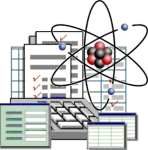Материал портала ядерных знаний BelNET
статья/документ по запросу ресурса "5409"
2005-08-08 Presentation at the Int. School-Seminar "Actual Problems of Microworld Physics", Gomel, Belarus, July 25 – Aug. 5, 2005 38 P. The conversion of kinetic energy of an electron beam into
radiation underlies the operation of many electronic devices.
Travelling wave tubes (TWT), backward wave tubes (BWT),
free-electron lasers (FEL) operate on this principle. Nowadays
FELs cover wavelength range from the microwave to ultraviolet. FELs lasing in the ultraviolet range operate on the basis of self-amplified spontaneous emission (SASE) mechanism. Despite the success achieved in this area, there are many problems to be solved. One of them is that the generation
frequency cannot be tuned in a wide spectral range. As a rule,
high-efficient lasers have optimal, preliminarily designed
parameters (such as electron beam characteristics, waveguide and
resonator sizes, undulator and grating periods, modulation, etc.).
Variations in any of these parameters, required for frequency
tuning, sharply reduce the lasing efficiency. Another problem
arises for large power lasing in microwave. In the generation of
pulses with high power output, it is desirable that the cross
section of the electron beam be large in order to reduce the
current density occurring at a high total current. However, when
the linear sizes of the cross-section exceed the generated
wavelength, a large number of parasitic modes are excited in the
resonator (waveguide). This leads to destructive interference and,
as a consequence, to sharp decrease in the efficiency of
generation.
One possible way to overcome these difficulties is to use volume distributed feedback (VDFB) in Volume Free Electron Laser (VFEL). The report is devoted to survey of progress in theoretical, mathematical and experimental investigations of VFEL. |
Вход, регистрация



